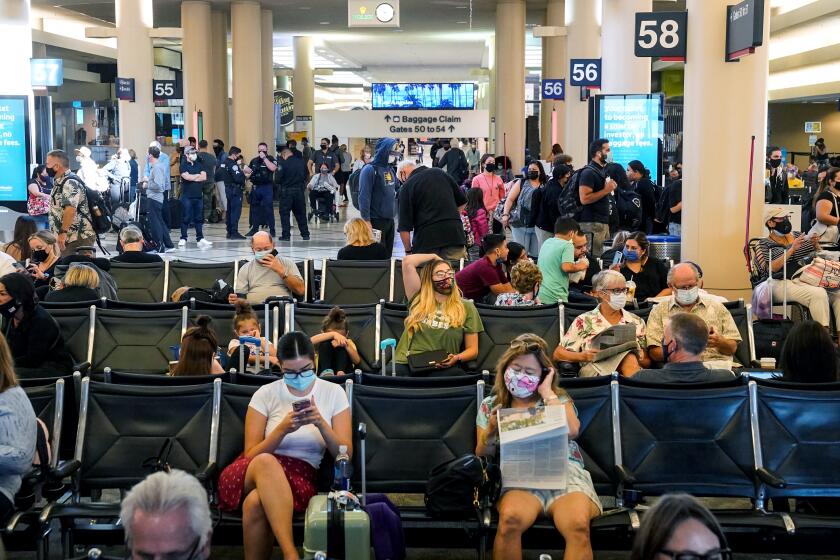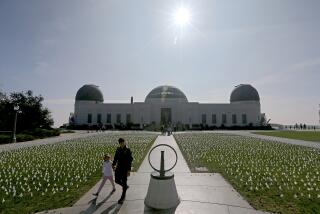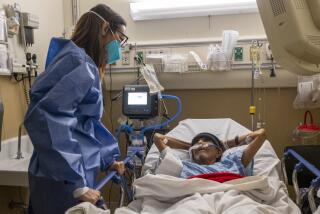California again shatters single-day coronavirus case record: more than 42,000 cases
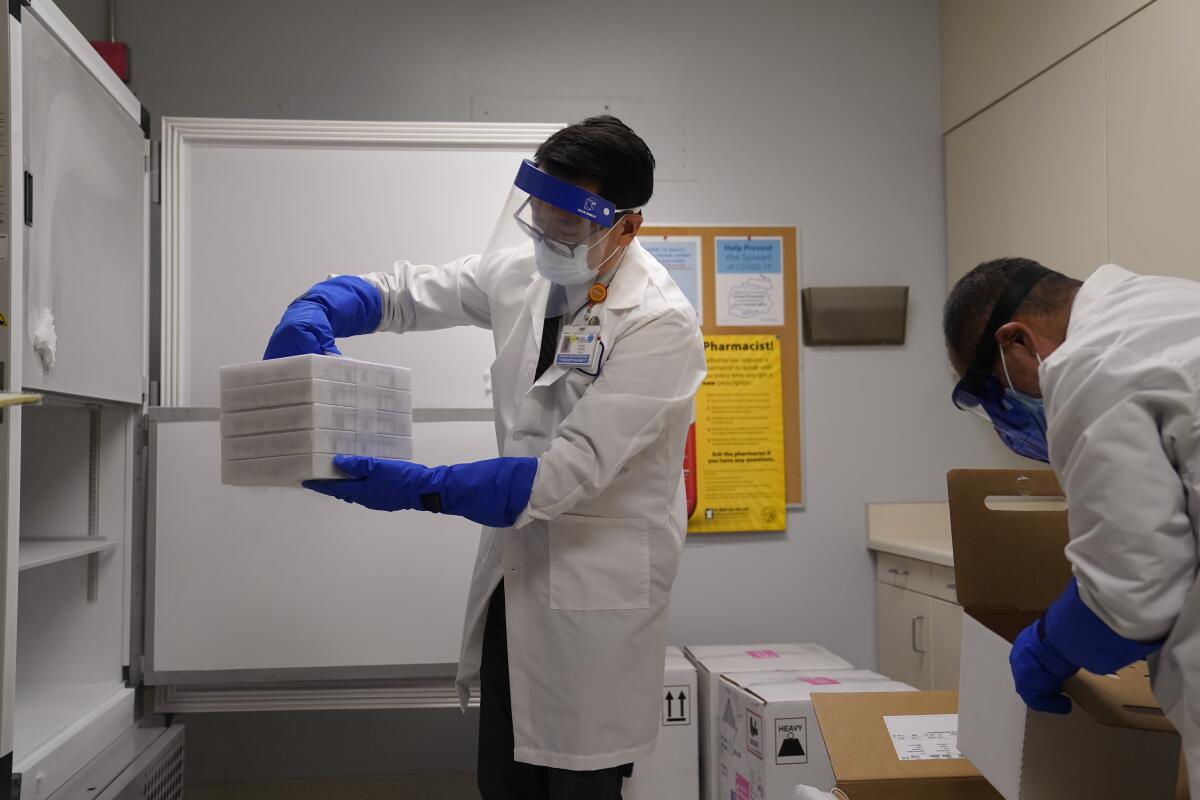
- Share via
California has shattered another grim record — more than 42,000 coronavirus cases in a single day, breaking a record set just a week ago.
A Los Angeles Times county-by-county tally tallied 42,129 coronavirus cases across the state Monday. That’s the first time more than 40,000 cases have been reported by the state’s local health agencies in a single day. And it breaks the single-day record set on Dec. 8, when 35,400 coronavirus cases were recorded.
The state is now averaging nearly 33,000 new coronavirus cases a day over the last week — the highest level ever recorded.
COVID-19 hospitalizations also continued breaking records. On Sunday, there were 13,635 people in California hospitalized, the 16th consecutive day the record has been broken. COVID-19 hospitalizations statewide are now six times worse than they were in late October.
The number of people in the intensive care units with COVID-19 have also soared, climbing to 2,967 on Sunday. That’s more than quadruple the number from Nov. 1.
Daily COVID-19 deaths are also climbing, too. The Times’ tally found that 155 deaths were recorded statewide Monday. That brings the average daily number of COVID-19 deaths over the past week to 164, the sixth consecutive day that number has broken the record.
Of the five regions of California as defined by the state Department of Public Health, Southern California is reporting the highest number of cases per 100,000 residents than any other — 690 cases per 100,000 residents in the last seven days. The Bay Area reported the fewest — 301 cases per 100,000 residents over the past week.
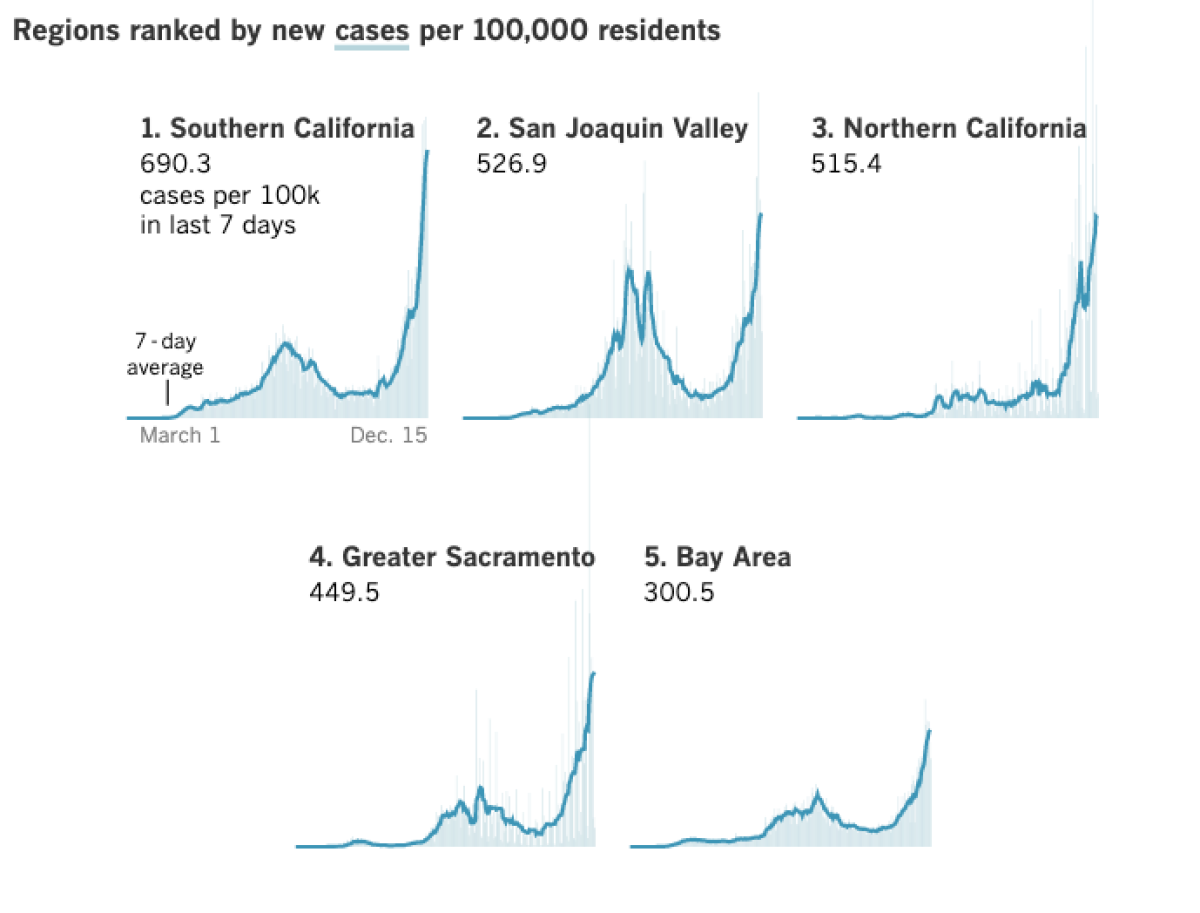
The counts came on a day that saw the first Californians were vaccinated with inoculations to COVID-19.
Gov. Gavin Newsom said Monday that there are some initial signs that the new stay-at-home order — in effect for most of the state for a week — was starting to work to reduce the movement of Californians.
“That is buying us time,” Newsom said.
But it will take time for the stay-at-home orders that went into effect in much of California on Dec. 6 to begin having an effect.
Barbara Ferrer, the L.A. County public health director, said she hoped to see the effects of the stay-at-home order become apparent in a stabilizing or decrease in the number of new daily coronavirus cases around Christmas in L.A. County.
Intensive care unit capacity was tight across the southern half of the state.
Across Southern California, available ICU capacity fell to 2.7% on Monday, down from 4.2% a day earlier. In the San Joaquin Valley, it fell again to 0%, meaning some critically ill patients must be housed in areas of hospitals not normally designed to care for ICU patients.
California has recorded a cumulative total of 1.61 million coronavirus cases and 21,200 COVID-19 deaths.
Asked about the controversy over his latest stay-at-home orders, which were imposed across most of the state last week and which some business owners have opposed, Newsom on Monday defended his approach. He and other officials have said it’s essential to ensure the hospital system is not overwhelmed, which would cause mortality to significantly rise.
“As soon as this pandemic is behind us, this state will recover more resilient, more vibrant than ever,” Newsom said Monday. “And so the most important thing we can do, from an economic perspective, is focus on public health. Focus on mitigating the spread of this virus.”
After “a gloomy COVID winter,” widespread vaccination will bring years of robust growth to California’s economy, the UCLA Anderson forecast says.
California was the first state in the nation, back in March, to introduce a statewide stay-at-home order, which public health experts credit for keeping deaths on a per capita basis lower than those in many other states.
Among the 50 states, the District of Columbia and Puerto Rico, California has the 39th highest cumulative number of coronavirus cases per 100,000 residents and the 39th highest cumulative number of COVID-19 deaths per 100,000 residents.
More to Read
Sign up for Essential California
The most important California stories and recommendations in your inbox every morning.
You may occasionally receive promotional content from the Los Angeles Times.
